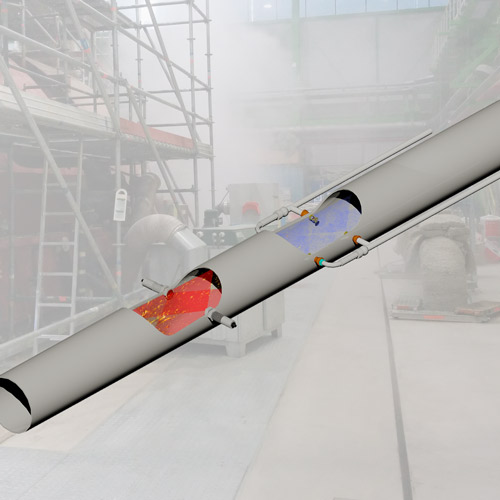The Invisible Threat
There is a certain invisible enemy – the spark. Subtle, almost invisible, and yet it can bring great destruction, both in industrial and domestic contexts. History is full of examples when an innocent spark became the source of a huge disaster. That is why spark detection technologies are crucial for our safety.
How Sparks Are Made: Processes and Phenomena
First, let’s consider where a spark comes from. The sparks we see are usually the result of a violent chemical reaction, such as combustion. They can be caused by friction (such as when metal strikes metal), by electrical discharges (as in the case of sparks caused by static electricity), or by the action of high temperatures on flammable materials.
The sources of sparks are different and depend on the situation. In the natural environment, sparks are often the result of lightning discharges. In an industrial context, sparks can be caused by friction of machinery, welding, or even during normal operation of electrical equipment.
Spark Detection Technologies
Due to the potential danger that sparks pose, many technologies and techniques have been developed to detect them. Some use optical detectors that track the characteristic light waves emitted by sparks. Others rely on radio technology to detect the energy released by a spark. Many systems combine both technologies for maximum effectiveness.
For example, let’s take the GreCon spark detection system. This advanced system uses optical and radio detectors to effectively detect sparks and hot particles in a variety of conditions. When a threat is detected, the system immediately raises an alarm and can even automatically trigger appropriate actions, such as activating fire extinguishing systems.

Practical Application of Spark Detection Technology
Spark detection technologies are invaluable in many scenarios. The most obvious of these are industrial situations, where sparks can be caused by friction, overheating, or improper use of machinery. Here, spark detection systems can help monitor machinery and increase overall worker safety.
Another important application is the protection of electronic devices. In some devices, such as computer servers, sparks can cause serious damage or even data loss. Spark detection technologies can help detect and prevent such situations, protecting valuable company assets.
In the home context, these technologies can also be very helpful. For example, spark detection systems can be integrated with home alarm systems to provide additional fire protection.
The advantages of using spark detection technology are:
- Fire Prevention: Sparks are a common cause of fires, especially in industry. Early detection can prevent a disaster.
- Improving workplace safety: Workers are less likely to be at risk of accidents when potential hazards are monitored and managed.
- Electronics Protection: Sparks can cause electronic damage. Spark detection technologies can help protect valuable company assets.
The Future of Spark Detection Technology
New and more advanced spark detection technologies are emerging, which aims to provide even greater safety in various areas. For example, the development of artificial intelligence and machine learning opens up new possibilities for spark detection systems. AI algorithms can help identify sparks more precisely and efficiently, increasing the effectiveness of the systems.
Another promising trend is the integration of spark detection technology with other safety systems. Such combined systems can provide holistic safety solutions that can better cope with different types of threats.
Summary
Spark detection technologies are essential to our safety, both in industrial and domestic contexts. Although a spark is small and often invisible, it can pose a significant threat. Therefore, it is important to understand where sparks come from and how we can detect them to prevent potential disasters.
As we can see, available spark detection technologies are becoming more advanced and effective. These systems play a key role in ensuring safety in various fields – from industry to private homes. It is worth investing in such technologies to minimize the risk of fires and other accidents related to sparks.
The future of spark detection technology seems promising. New technologies such as artificial intelligence and machine learning could bring significant improvements. We can expect systems that are increasingly precise, effective, and integrated with other safety systems.
In closing, it is worth noting that despite technological advances, we cannot rely solely on technology to ensure safety. Proper education, risk awareness and proper safety procedures must also be emphasized. Spark detection technology is a powerful tool, but like any tool, it must be used wisely and responsibly.
